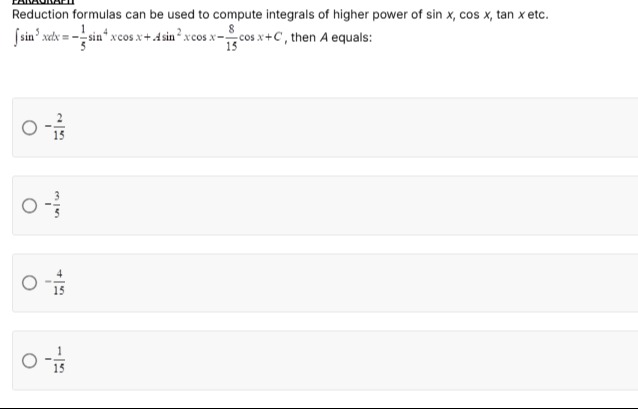Question
Question: Reduction formulas can be used to compute integrals of higher power of sin x, cos x, tan x etc. $\i...
Reduction formulas can be used to compute integrals of higher power of sin x, cos x, tan x etc.
∫sin5xdx=−51sin4xcosx+Asin2xcosx−158cosx+C, then A equals:

−152
−53
−154
−151
−154
Solution
The reduction formula for the integral of sinnx is given by: ∫sinnxdx=−n1sinn−1xcosx+nn−1∫sinn−2xdx For n=5: ∫sin5xdx=−51sin5−1xcosx+55−1∫sin5−2xdx ∫sin5xdx=−51sin4xcosx+54∫sin3xdx Now, we apply the reduction formula for n=3: ∫sin3xdx=−31sin3−1xcosx+33−1∫sin3−2xdx ∫sin3xdx=−31sin2xcosx+32∫sinxdx ∫sin3xdx=−31sin2xcosx+32(−cosx)+C′ ∫sin3xdx=−31sin2xcosx−32cosx+C′ Substitute this result back into the expression for ∫sin5xdx: ∫sin5xdx=−51sin4xcosx+54(−31sin2xcosx−32cosx)+C ∫sin5xdx=−51sin4xcosx−154sin2xcosx−158cosx+C The given expression is: ∫sin5xdx=−51sin4xcosx+Asin2xcosx−158cosx+C Comparing the derived expression with the given expression, the coefficient of the sin2xcosx term is A. Therefore, A=−154.
